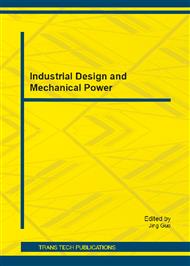p.39
p.43
p.47
p.51
p.55
p.61
p.65
p.69
p.73
Numerical Research on Flow Field Characteristics within the Slipstream of a Propeller
Abstract:
Numerical research on three dimensional flow field of a propeller and actuator disk model have been made. Under design conditions (headway 66.889m/s, revolving velocity 2575rpm), the Slipstream flow field after Propeller is solved by RANS equations with structure mesh. Chosen 12 million mesh through verification of reliability analysis. The numerical result consists of the flow field and vortex field in the propeller slipstream. With comparison to the calculation result of standard strip theory and actuator disk model, it is shown that for light load propeller with the side small contraction of slipstream, in the slipstream cross section after 0.6R away from downstream of propeller rotation plane, the axial, circular and radial induced velocity coefficient by Prandtl’s blade tip corrected standard strip theory result; three dimensional flows numerical simulation and actuator disk model are well consistent. It verified the correctness of standard strip theory and also provided scientific basis for the correction of actuator disk model
Info:
Periodical:
Pages:
55-60
Citation:
Online since:
November 2012
Authors:
Price:
Сopyright:
© 2012 Trans Tech Publications Ltd. All Rights Reserved
Share:
Citation:


